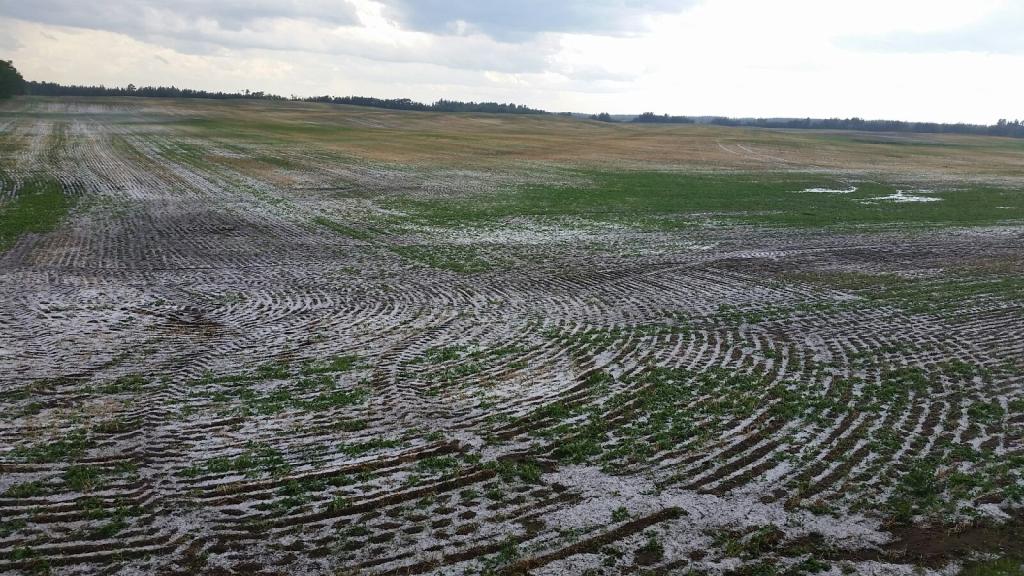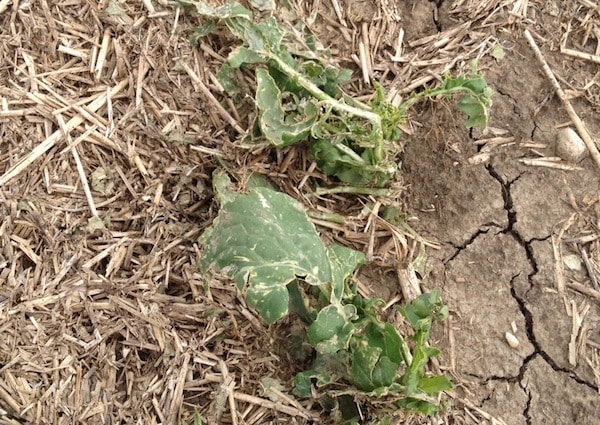

The later hail occurs, the higher the chance of yield loss, given that the plants have less time to recover. Plants with a broken main stem will likely die. Plants at the 6-leaf stage that lose most of the leaf area on the main stem can still live, but these leaves will not regrow. The plant will be delayed, and more of the yield potential — which will be lower than before the hail — will come from side branches.
Steps to consider:
Fertilizer top up. If a lot of leaf mass has been knocked of the plant, the nutrients in these leaves are unlikely to mineralize this crop year. So if crop recovery is strong, an in-crop nitrogen application can replace the nitrogen already taken up in this lost leaf mass. Results will be better if nitrogen supply was already low to moderate. Keep in mind that added nitrogen can also extend maturity, so consider the calendar date and crop stage with an eye on fall frost risk.
Fungicide if blackleg risk is high. Canola hailed at the 4- to 6-leaf stage can get more blackleg infection through damaged tissue. Fungicide might help, but only if you were considering using it in the first place. If the field was already at high risk of blackleg, hail damage increases that risk. If blackleg was not a major risk, fungicide probably won’t help much.
An important step with hail damage at any time of the season is to call your hail insurance provider and keep them in the loop.
Further reading:

